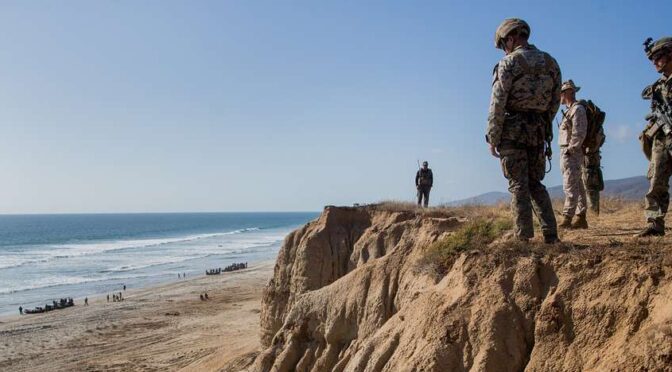Notes to the New Administration Week
By Walker Mills
The last two presidential administrations have presided over a shift to an increasingly confrontational relationship with the People’s Republic of China (PRC) and the new administration appears ready to continue that trend, if not accelerate it. Senior military leaders especially have been alarmingly clear about likelihood of a potential conflict with the PRC over Taiwan. From “the Davidson Window” to even more specific warnings about a war in 2025, the Pentagon has been sounding the alarm.
But unfortunately, there has been an outsized focus on a “short sharp war” rather than a protracted conflict, or even a narrower focus on the first “72 hours” of a conflict. Winning a war between great powers in only hours or days is an attractive goal, but it is also ahistorical.
There is no reason the U.S. military should expect a conflict with the PRC to be short, or to be won quickly. Rather, history tells us the opposite. Why would we expect the world’s most populous country and the second-largest economy to back down after only the opening salvo of a war it started, even if the opening round went poorly?
The most important lesson from the ongoing conflict in Ukraine is not about drones or the continued viability of armored maneuver. It is the reminder that wars will almost inevitably continue long after the combatants expected them to end – creating acute shortages of troops and materiel that threaten strategic collapse.
Both Russia and Ukraine initially slow-rolled conscription efforts for political reasons, and those decisions had significant negative effects on the battlefield. In the material realm, neither country is able to keep up with the battlefield usage of shells, tanks, drones and other equipment. In Russia’s case, it has been forced to draw from decades-old stocks of armored vehicles and has been forced to turn to Iran and North Korea for weapons, while also luring recruits from faraway countries like Yemen and Nepal to fill out its depleted ranks. Ukraine for its part is still overcoming a critical period of “shell hunger” and is heavily reliant on Western support for weaponry ranging from tanks to cruise missiles.
If there is a silver lining, it is that discussions about protraction are becoming increasingly common inside and outside the military. In the words of one Navy officer, focusing on a short sharp war is a “loser’s gambit,” and from a Marine, it is “short-sighted.” But a recognition of the reality we face is only the beginning.
The incoming administration needs to take concrete steps to prepare the sea services for a multi-year conflict by ensuring they have the right mix of capabilities for a long war, can rapidly generate new combat forces, and can keep existing forces well-equipped to keep up the fight. The services need to ensure they can draw from well-organized and resourced reserve components that are fit for the purpose of supporting the active-duty component in a major conflict. And, just as importantly, the services need to ensure they can rapidly generate combat power from new recruits, or potentially even draftees. This will ensure that the Navy and Marine Corps are ready not just to “fight tonight,” but to fight tomorrow, and the next year too.
Walker D. Mills is a Marine infantry officer and MQ-9A “Reaper” pilot. He is a co-host of the Sea Control podcast and a Senior Editor at CIMSEC. He is also a Co-Director of the Irregular Warfare Initiative’s Project Maritime.
The views expressed here are those of the author and do not necessarily represent the official positions or opinions of the U.S. Marine Corps, the Department of Defense, or any part of the U.S. government.
Featured Image: U.S. Marines with Charlie Company, 1st Battalion, 5th Marine Regiment, 1st Marine Division, observe their surroundings during a small boat raid at Marine Corps Base Camp Pendleton, California, Sept. 10, 2019. (U.S. Marine Corps photo by Lance Cpl. Brendan Mullin)



